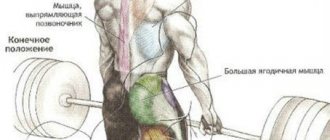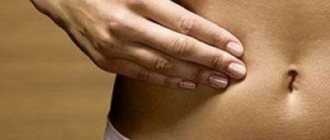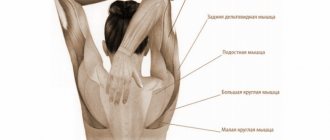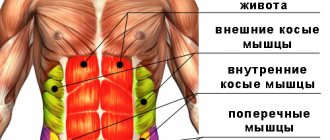© LMproduction — stock.adobe.com
Share:
Running exercises are an integral part of CrossFit. They develop the cardiovascular system, increase the vital capacity of the lungs and at the same time perfectly stimulate endurance. But not every athlete benefits from running. Many people experience severe pain in their legs, which is almost impossible to relieve while running. Why do my knees hurt during and after running and what can I do about it? You will receive a detailed answer to this question in our article.
Why your knees may hurt after running
Let's look at the main reasons that can cause knee pain after running and running exercises.
- Meniscus damage. Many people experience the following situation: during normal walking and at rest, the knees do not remind themselves, pain is not felt. But when running, discomfort and pain begin. One of the reasons may be damage to the meniscus - this is one of the cartilages of the knee, connected by ligaments to cartilaginous tissue. An inaccurate sudden movement can damage the ligament, and in some cases it can rupture, which will lead to severe pain. A person may not even be aware of small tears in the meniscus, and only learns about them when the pain increases sharply. By this time, the ligament can be completely torn. It is better to consult a doctor if pain of any severity occurs.
- Dislocation of the kneecap. This type of injury is quite common among runners. Fortunately, the consequences are much less severe than with a meniscus injury. However, if dislocations continue from time to time, the knee ligaments are stretched and the injury may occur again.
- Rupture or sprain of ligament tissue. Active training and physical activity can lead to this type of injury. Characteristic signs are: pain in the knee area, swelling, limited mobility, and a feeling of painful discomfort when touched.
- Vascular disorders of the blood system. In this case, discomfort will not be felt constantly, but periodically. You will not feel a specific location of the pain, which will go away on its own.
In addition to the above reasons, pain can occur due to the development of the following pathologies:
- Arthritis, arthrosis;
- Tendinitis;
- Synovitis;
- Rheumatism;
- Bursitis;
- Periarthritis.
When might it occur?
When do your knees hurt from running? First of all, during the running exercise itself. Secondly, this pain can occur if there was a heavy squat, or even deadlift, in your training WOD before running.
Sometimes your knees hurt not during running, but after it. Why is this happening? Everything is very simple. Our body is in a state of stress during training. Any stress injects adrenaline hormones into our blood. And adrenaline is not only a powerful stimulant, but also a fairly effective pain reliever.
In addition, after running, the body launches recovery processes, which can lead to pain syndromes. Don't forget that even when you stop running, your legs still take the lion's share of the load during CrossFit exercises or walking. That is, there is no clear answer to the question why knees hurt after running. But most likely it is overload or injury.
© WavebreakmediaMicro - stock.adobe.com
Why can your knees hurt while running?
While running, your knees can hurt for several reasons, which we will discuss in detail below.
- Uncomfortable or incorrect shoes. For running, you need special shoes, the feet of which protect your knees from overload. The range of such sneakers varies depending on the surface on which the runner trains. Beginner runners should pay attention to sneakers with thick soles to cushion their steps during training.
- Incorrect running technique. If a person runs with long strides and puts a lot of stress on the legs, including the tendons and ligaments of the knee, it is necessary to change the running technique. Watch the extension of the hip, the knee should be directed forward and slightly upward.
- Loads. When running, a person's foot experiences a shock of about twice the weight of their body. If there are various pathological defects of the foot, such as flat feet, then the load is transferred to the knees and pelvis. In this case, it is better to stop exercising and visit an orthopedic doctor.
- Surface. Too hard surfaces, such as concrete and asphalt, provoke injuries even if a person follows running technique and trains in special sneakers. It is better to look for other options - dirt tracks or special rubber running tracks in arenas or stadiums.
- Intensity of classes. Some beginners, after a couple of workouts, already imagine themselves omnipotent and try to increase the mileage they run per session as quickly as possible. This is strictly not recommended. Add no more than 10% from the previous session to the kilometers in the next workout.
- Chronic diseases, injuries. The entire list of pathologies and injuries that we described above can cause knee pain while running. Consult a specialist, cure all sores, then start training.
Preventing knee pain after running
To avoid pain below the knee after and during running, follow these recommendations:
- It is recommended to run on a flat surface so that the load on the knee joint is even. A rubberized coating is ideal. Paving stones and asphalt are too hard and can significantly increase the stress on the spine and legs.
- Remember the correct running technique: place your foot straight, then roll smoothly from heel to toe.
- Use the right running shoes. Choose sneakers that fit properly, have a fairly rigid heel counter and flexible toe box, and are not too tight or too loose. Don't lace them too tightly.
- Remember to warm up and stretch before training.
- Monitor your running time and intensity. There is no need to immediately give yourself maximum loads. Start small and gradually increase them. Excessive loads can cause overstrain of muscle tissue, and running for too long will put a lot of stress on the joint, to which it can respond with pain.
- It is important to breathe properly during training. Breathing should be smooth, with an equal number of inhalations and exhalations. Place the main emphasis on smooth exhalation - it provides good internal ventilation of the lungs.
Running is beneficial and effective for both your figure and your health, but it is very important to maintain common sense and give yourself moderate loads, increasing them gradually. If you feel discomfort in your knee, be sure to think about what could be causing this and contact a specialist to prevent unpleasant consequences as early as possible.
Pain in Beginner Runners
Beginning athletes often make mistakes that lead to unnecessary injuries. Let's take a closer look at these omissions.
- Lack of warm-up before class. A classic mistake made by most newbies. You should always warm up, otherwise there is a risk of muscle injury or torn ligaments;
- Exorbitant load. There is no need to try to overtake Usain Bolt or run forty kilometers from the first training session. Start with small distances, gradually increasing the intensity and running time;
- Incorrect running technique. As mentioned above, beginner athletes sometimes suffer from clumsiness and incorrect movements while running;
- Diseases of the musculoskeletal system. Flat feet, spinal diseases and other problems do not allow a person to run. If you have such diseases, it is better to go to a doctor who will prescribe special exercises and medications;
- Shoes and place to run. Shoes should be comfortable, not chafe or fall off. The place for jogging should be flat, without bumps, preferably with a soft surface: rubber band or dirt;
Prevention
The best prevention against knee pain from running is to avoid running. However, if your program involves a constant load, take precautions.
| Preventive measure | How does it help? |
| Knee brace | It is recommended to wear it not only while running, but also during any exercise with a vertical load. It reduces friction in the knee joint, preserves ligaments and tendons. |
| Shock-absorbing shoes | Cushioned shoes reduce the momentum associated with running exercises. In fact, the entire impact impulse is absorbed by the sole, which, springing, transmits a softer impulse to the entire body. Such shoes protect not only the knees, but also the spine. |
| Taking vitamins and minerals | Often, during drying and taking special medications, the body experiences a lack of vitamins and minerals, especially calcium, which affects the condition of the bones. Taking a vitamin-mineral complex solves this problem. |
| Reducing the intensity of running exercises | Running is often used as a method of losing weight. At the same time, the intensity and duration of running exercises exceed acceptable standards. If your primary focus is not on achieving maximum speed and endurance in running exercises, it is recommended to reduce your running intensity. |
| Taking special medications | There are special medical procedures and medications that increase the strength of joints and ligaments. Consult your doctor before taking these medications. |
| Temporary cessation of running exercises | You shouldn't use running as a weight loss tool. In most cases, adequate cardio can be easily achieved through other exercises, such as the elliptical trainer or cycling. |
| Reducing your own weight | If you are overweight, bring your indicators back to normal - this will reduce the load on the knee joint, ligaments and tendons. |
Knee pain in professional runners
Professionals also experience knee pain. Most of the reasons are related to running itself; doctors even have concepts: “runner’s knee”, “jumper’s knee”.
The main causes of knee pain in professionals:
- Diseases of the knee joints. This item includes injuries to the knee due to various diseases, such as osteoporosis and rheumatism, as well as inflammation of the ligamentous-articular apparatus of the knee (arthritis, bursitis, arthrosis);
- Ligament injuries. A ruptured or sprained ligament causes pain in the knee and limits mobility;
- Problems with blood vessels in the knee area. Varicose veins, vascular atherosclerosis, endarteritis. Often occurs during adolescence when bones grow too quickly due to lack of blood circulation;
- Problems with the meniscus.
- Inflammation of the sciatic nerve. The pain radiates to the lower back, in most cases one-sided;
- Patella dislocation. If an injury haunts you regularly, the ligaments become more flexible and the pain becomes chronic. “Runner's knee” provokes permanent dislocation. The tissue of the patella is destroyed, mobility is impaired and pain appears in the knee;
Causes of knee pain
Before we figure out what to do, let's figure out why your knees may hurt after running. The cause is not always an injury or serious illness, but the symptom should never be ignored.
Let's remember what a knee is. This is one of the most complex joints in the human body, taking on enormous loads. The joint connects the thigh and lower leg and is responsible for the overall mobility of the lower limb. The design is unique - it gently holds the weight of the human body, not only at rest, but also under load. During running, the latter increases greatly.
Let's highlight 3 groups of reasons why knees hurt after running or training:
- Pathological processes in the joint;
- Damage to the ligamentous apparatus;
- Inflammatory processes in the kneecap.
These causes of knee pain after running are most often due to overuse. The athlete ignores the pain and continues to train, thereby aggravating the situation. Other options are poor running technique, uncomfortable shoes, uneven ground.
We propose to expand on these groups and list all possible situations that cause knee pain in track and field athletes.
- Meniscus injury. This is thin cartilage that is responsible for shock absorption and stabilization of the joint. If your knees hurt on the inside after running, you could have strained, or worse, torn, your meniscus. In this case, a sharp pain is first felt, then the leg swells and it becomes difficult to step on.
- Patella dislocation. A common reason that is familiar to many runners firsthand. By the way, it is this pain that they usually ignore due to its low intensity. They blame it on fatigue or overload. The symptom passes quickly, as a rule, by the next training session, and the athlete continues training as if nothing had happened. As a result of systematic dislocations, the ligaments are stretched and the knee becomes less stable. The risk of serious injury increases significantly.
- When the outside of your knee hurts after running, there is a possibility of damage to the lateral or collateral ligament.
- Beginners often look for an answer to the question: why do my legs hurt below the knee in front after running? This localization may be due to inflammation of the periosteum (periosteum). The periosteum is the thinnest film that envelops the bone. As a result of improper running technique, the film becomes detached from the base and becomes inflamed. A person experiences aching pain in his knee.
- When various ligaments in a joint are sprained or torn, pain can be localized in different places. After running, some people’s legs hurt above the knee in front, for others it hurts inside, for others it hurts on the inside. Common signs of such an injury are severe swelling, pain with stress and touch, and limited mobility.
- The problem is not always with the ligaments. Sometimes the knees hurt due to pathological rheumatic diseases: arthritis, arthrosis, periarthritis, rheumatism, bursitis, synovitis, tendonitis. Diseases of the knee joint should be treated only under the supervision of a doctor.
- If you feel that after running the bones below the knee hurt, it may be due to insufficient blood supply to the knee sector. With such vascular disorders, the pain is usually weak and of unknown localization. It feels like the soft tissues are hurting, but at the same time, it seems like the bones are aching. Most often, adolescents who have entered a phase of active growth complain of such symptoms. The vessels simply do not have time to grow at the same rate as the skeleton lengthens.
In addition to injuries and diseases, the knee can hurt due to the general unpreparedness of the athlete and poor organization of the run:
- Unsafe soil - uneven, bumpy, or vice versa, asphalt or concrete. The ideal ground for safe running is a special surface on running tracks or natural trails without obstacles;
- Incorrect running technique - incorrect foot placement or body position. As a result, the load on the joint increases and the knee hurts;
- Flat feet – running with this genetic feature of the foot structure greatly overloads the knees;
- Bad shoes - tight, do not support the foot, heavy, not the right size, etc.;
- Ignoring warm-up.
What to do if your knees hurt after or during running
If during or after training you feel a sharp shooting pain in the knee area, then under no circumstances should you delay contacting a specialist. The knee will definitely not go away on its own.
But going to the doctor is not possible immediately after pain or injury, so here are the first measures that need to be taken:
- Apply something cold to your knee and secure the joint with an elastic bandage;
- Swelling of the leg can be reduced by raising it slightly and placing it on a pillow so that it is higher than the level of the heart;
- Two days is enough for the inflammatory process to slow down and the pain to subside. From this point on, you can warm up the joint and do therapeutic exercises for recovery;
- Now use an elastic bandage. Do not tighten the knee, otherwise the knee may become swollen or numb, and the pain will return;
- If the pain is severe, you can use painkillers. Good help: diclofenac, paracetamol, nurofen, aspirin;
Treatment
Prevention is an excellent treatment, and early diagnosis makes it easy to avoid serious joint problems. Joint diseases are one of the most common diseases; significantly complicates a person’s life and deprives him of movement. Therefore, it is important to be treated by a competent doctor.
Currently, there are several treatment methods.
Therapeutic
Healing joints without surgery. First of all, the doctor tries to relieve pain and relieve pain. In his arsenal:
- painkillers and anti-inflammatory tablets;
- ointments and gels;
- injections;
- physical therapy and massage.
Surgical
It is used if the therapeutic treatment does not produce a stable and lasting effect, or if the client comes to the doctor late and the treatment is not rational. This surgery also involves replacing the joints with artificial ones.
ethnoscience
The practice of administering various herbal preparations, friction, compresses, decoctions to relieve pain and swelling.
How to treat
Treatment for knee pain begins with determining the cause. The doctor must not only determine whether it is inflammation, a sprain or a tear, but also correctly point to the damaged area. The now expensive MRI does this well.
The doctor, having identified the problem, will prescribe special medications, therapeutic exercises and exercises. If the problem is not serious, then sometimes you can get by by adjusting your training schedule or correcting your running technique.
Causes of pain
There are several most common causes of knee pain:
- Excessive stress on fragile muscles and ligaments. If before a person started running, he led a sedentary lifestyle (sedentary work, rare walks, etc.), then the occurrence of pain is not unexpected. To avoid pain for this reason, you need to think about your health in advance. Don't start with heavy loads right away, prepare your knees for movement: devote time to walks and lower body exercises. And only after that you can run.
- Injuries. If there have been injuries to the foot, pelvis, spine, or meniscus damage in the past, this can also cause pain. The solution to the problem is manual therapy. Seek advice from a specialist.
- Weak joints. The cause may also be a lack of minerals and vitamins that are involved in the regeneration and maintenance of physical strength of joints, ligaments, and muscles. If a person decides to take up running, then he needs to keep his body in working condition: eat right, take vitamins.
- Inappropriate running technique. How a person runs also plays an important role. A properly selected running technique that suits him will help avoid pain in the knees.
- Inappropriate shoes. Finding comfortable sneakers is extremely important. When purchasing, be sure to take into account the fact that even slightly uncomfortable shoes can negatively affect your health.
- Wrong place to run. For training, you should choose smooth paths that do not have holes or bumps. The asphalt surface on the treadmill causes additional stress.
You can find out for yourself why your knees ache. But sometimes pain can occur on the inside or outside of the knee, on the side, so it will not be easy to determine the exact cause without a specialist.
Restrictions during treatment
During the restriction, it is better to give the knee rest and exclude all running training and exercises. It is better to start the recovery process with more gentle types of exercise - swimming, cycling, training on an elliptical trainer.
It is also recommended to avoid acceleration and running downhill during your first running workouts. Training volume should start at 30-40% of your normal pre-injury mileage.
Methods of pain relief
Severe aching pain can occur suddenly during exercise. In this case, the activity should be stopped immediately, but you should not stop suddenly. Slow down gradually, take a step and only then come to a complete stop. You can relieve pain as follows:
- Release the joint from the load. To do this, carefully secure it with an elastic bandage or bandage.
- Place your leg higher than your body.
- Ice will help relieve pain both on the side and on the inside of the joint. Avoid direct contact between ice and skin. Wrap the ice in gauze or a towel. The procedure should be repeated 3-4 times for 15 minutes every hour.
- If you do not have intolerance or allergies, you can take a painkiller.
If unpleasant sensations appear regularly, then you need to reconsider your training. Maybe you are doing something wrong.
How to relieve joint pain
To avoid pain when running, it is recommended to carry out relief measures. In this matter, seek help from a doctor who will tell you the correct method of implementation.
Acute attack
Most often, a person suffers from acute pain that suddenly appears when running, walking, and even while sitting. So, if your body has become a victim of this condition, take the following measures:
- Stop training at the first sign of knee pain.
- Take the pressure off the joint by using a bandage or elastic bandage.
- Apply a cold compress to the painful knee for 15 minutes. If your hip hurts after running, avoid exposing it to heat.
- Take a comfortable position.
- It is allowed to drink painkillers - drugs containing ibuprofen, paracetamol, Ketanov;
- If the pain does not subside but increases, consult a doctor immediately.
Try to stay in one position during an attack - this will take the load off the joint, alleviating the condition.
Chronic pain
They are constantly present in the patient. Usually the pain is muted, only sometimes arising with renewed vigor. To make a correct diagnosis, you need to consult a specialist.
If you don't want to feel a twinge of pain in the gym, make it a rule to warm up before training, fixing the joint with bandages. The use of warming ointments helps improve nutrition of the affected organs. You can replace them with a compress or a hot shower.
When the pain becomes severe, take painkillers prescribed by your doctor.
"Risk zones"
The first is people with high weight, more than 90 kilograms.
The second is people without any sports background who start running too quickly (or they had a sports past, but several years passed between the last physical activity and return to sports). All office employees who suddenly decide to run a marathon are at risk.
A much rosier picture is for someone who, for example, went to the gym, ran there as a warm-up, but at some point decided to make running the main load.
At risk are people with orthopedic problems - with longitudinal, transverse flat feet. Also at risk are runners who have a history of musculoskeletal problems, including people with fractures or knee surgery.
I haven't noticed that knee injuries affect people of a certain gender. According to my observations, if a man comes to an appointment, it means that he already has an advanced case.
Men are more inclined to self-medicate, to be patient, to run away. Women are more sensitive to their health. And a woman with a not very pronounced injury is more likely to come than a man. Therefore, in general, it may seem that women are more susceptible to knee problems.










